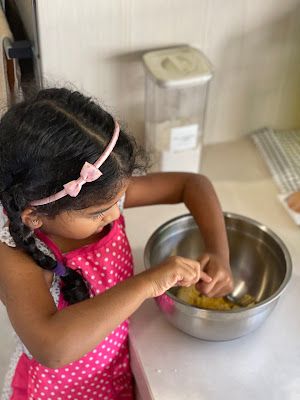The Heartfelt Benefits of Home Cooking
Healthier Meals: When you cook at home, you have full control over the ingredients you use. This means you can choose fresh, wholesome ingredients and avoid preservatives and additives. You can cater to your family's dietary needs and preferences, ensuring everyone eats healthily. Your kids indirectly learn how to make healthy choices too!
Family Bonding: Cooking together or even just eating a homemade meal fosters family bonding. It creates opportunities to talk, laugh, and share your day with each other. These moments become cherished memories that strengthen family ties.
Cultural Connection: Home cooking allows you to pass down traditional recipes and culinary techniques, keeping your cultural heritage alive. It's a way to teach your children about their roots and instill a sense of pride in their heritage.
Financial Savings: Eating out frequently can be expensive. Home cooking is a cost-effective way to feed your family nutritious meals. With careful planning and smart shopping, you can significantly reduce your food expenses.
Life Skills: Teaching your children to cook equips them with essential life skills. They learn about nutrition, meal planning, and the joy of creating something from scratch. These skills will serve them well throughout their lives.
Tips for Making Home Cooking Enjoyable and Easy
Plan Ahead: Take some time each week to plan your meals. This can help you streamline grocery shopping and ensure you have all the ingredients you need. Planning ahead also reduces the stress of last-minute cooking.
Get the Family Involved: Turn cooking into a family activity. Assign age-appropriate tasks to your children, like washing vegetables, stirring pots, or setting the table. This not only makes cooking more fun but also teaches teamwork and responsibility.
Keep It Simple: You don't need to prepare elaborate meals every day. Simple, wholesome dishes can be just as delicious and satisfying. Focus on using fresh ingredients and basic cooking techniques to create tasty meals.
Create a Positive Atmosphere: Play some music, share stories, or even dance around the kitchen. Creating a positive and relaxed atmosphere makes cooking a joyful experience rather than a chore.
Experiment Together: Don't be afraid to try new recipes or ingredients. Experimenting in the kitchen can be a fun adventure for the whole family. Who knows, you might discover a new favorite dish!
Celebrate the Little Wins: Whether it's mastering a new recipe or just successfully cooking a meal after a long day, celebrate your achievements. Acknowledge the effort and love that goes into every meal you prepare.

Comments